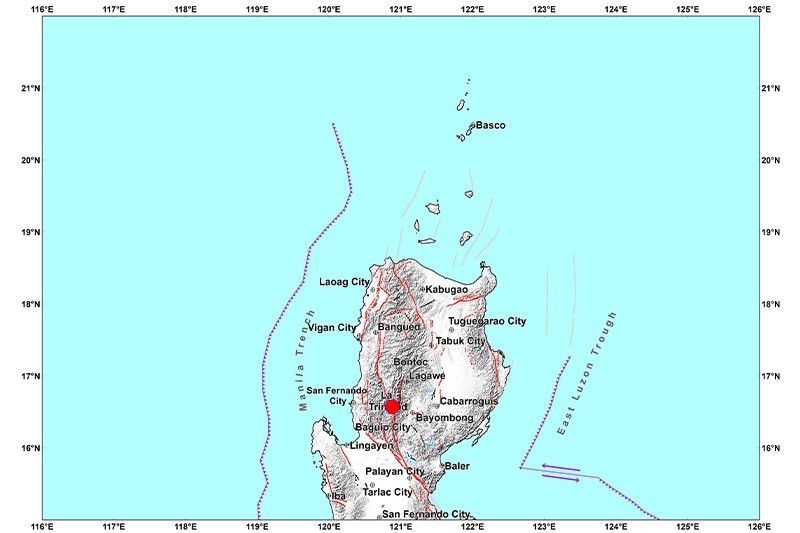Tremor felt in Baguio City, North Luzon on eve of 1990 killer quake's 34th anniversary

BAGUIO CITY — Baguio City residents, especially those who experienced the devastating July 16, 1990 earthquake, hardly slept on Monday after a series of quakes jolted the city and the province of Benguet, Cordillera and North Luzon on the eve of the killer quake’s 34th anniversary.
The Philippine Institute of Volcanology and Seismology (Phivolcs) recorded the 4.5 magnitude quake at 10:12 p.m. on Monday.
Its epicenter was traced 16.56°North, 120.88°East - 008 kilometers South 33° East of Kabayan, Benguet. It was felt at the following intensities:
- Intensity III - Kabayan, Benguet
- Intensity II-Kayapa and Dupax Del Norte, Nueva Vizcaya
Instrumental Intensities:
- Intensity II - Lamut, Ifugao
- Intensity I - Bontoc, Mountain Province
At 11:10 p.m. on July 15, a magnitude 2.0 quake was recorded by Phivolcs in Baguio City. Its epicenter was located 16.55°North, 120.87°East - 033 kilometers North 64° East of Baguio City.
Another magnitude 2.9 tremor was recorded at 11:29 p.m. of July 15, with epicenter traced at 16.52°North, 120.90°East - 008 kilometers North 65° East of Bokod, Benguet.
At 9:06 a.m. on July 16, a magnitude 2.1 tremor was recorded by Phivolcs. Its epicenter was located at 17.62°North, 122.18°East- 026 km N 13° West of Maconacon, Isabela part of North Philippines.
No one was hurt and no properties were reported damaged from these tremors.
Thirty four years ago, a magnitude 7.8 earthquake rocked most parts of Central and North Luzon, virtually sending Baguio City on its knees as buildings including the famous Hyatt Hotel, Hilltop Hotel, Nevada Hotel and several other structures crumbled.
The July 16, 1990 jolt’s epicenter was located in Rizal, Nueva Ecija. However, Baguio suffered the most followed by Cabanatuan and Dagupan cities.
Around 1,200 lives perished and billions of pesos of properties were destroyed by the quake.
- Latest
- Trending





























